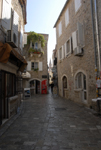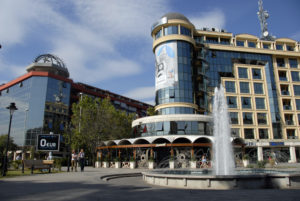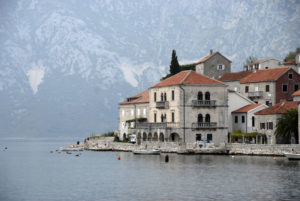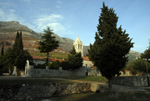Receive our newsletter
Your e-mail address is only used to send you our newsletter and information about the activities of Strasbourg Europe. You can always use the unsubscribe link included in the newsletter.

Picture: Budva, Montenegro © European Commission
 Podgorica is the commercial and cultural center of Montenegro. His name emerged in 1326. the city is built around five rivers, the Zeta, the Moraca, the Ribnica the Cijevna and Sitnica. Most of the city was destroyed during the Second World War therefore Podgorica is now a relatively new city with modern buildings and green spaces. Podgorica organizes many cultural events throughout the year. Its rich culture encompasses many theaters as Crnogorsko Narodno, the Gradsko Dodest theater and many cultural and historical centers around Podgorica, as Sahat-kula, Adzi Osmanagic-pasa, the ruins of Nemanjic Grad and those of the city of Doclea.
Podgorica is the commercial and cultural center of Montenegro. His name emerged in 1326. the city is built around five rivers, the Zeta, the Moraca, the Ribnica the Cijevna and Sitnica. Most of the city was destroyed during the Second World War therefore Podgorica is now a relatively new city with modern buildings and green spaces. Podgorica organizes many cultural events throughout the year. Its rich culture encompasses many theaters as Crnogorsko Narodno, the Gradsko Dodest theater and many cultural and historical centers around Podgorica, as Sahat-kula, Adzi Osmanagic-pasa, the ruins of Nemanjic Grad and those of the city of Doclea.Kotor -natural and historical world heritage


Picture : Monastery of Rezivici © European Commission
A traditional instrument: the gusle
Sources of texts:
Your e-mail address is only used to send you our newsletter and information about the activities of Strasbourg Europe. You can always use the unsubscribe link included in the newsletter.
Information Center
on the European Institutions (CIIE)
Europe Direct Information Center
All rights reserved to the CIIE
Non-profit organization
Mailing address
1 allée Kastner
67000 Strasbourg
France
Visitors entrance
8 rue Boecklin
67000 Strasbourg
France
To provide the best experiences, we use technologies such as cookies to store and/or access device information. Consenting to these technologies will allow us to process data such as browsing behavior or unique IDs on this site. Failure to consent or withdrawing consent may adversely affect certain features and functions.
Europe Direct network
The CIIE team
Contact information and opening hours
Lieu d’Europe
The CIIE offices
Contact us
CIIE’s Documentation Centre & Publications
School presentations & Activities
Borrowing of learning material
Activities for the general public
Institutions of the European Union in Strasbourg
Institutions Under the Authority of the Council of Europe
Other European Organisations in Strasbourg
Sessions of the European institutions in Strasbourg
Visiting the institutions
Map of the European district of Strasbourg
Institutions in Strasbourg in photos
Discover artistic Europe
National holidays of the member states of the Council of Europe